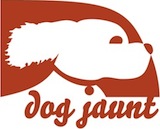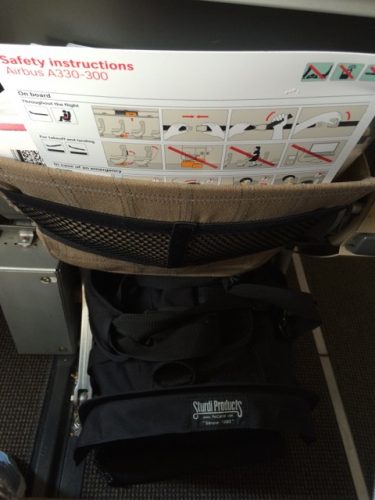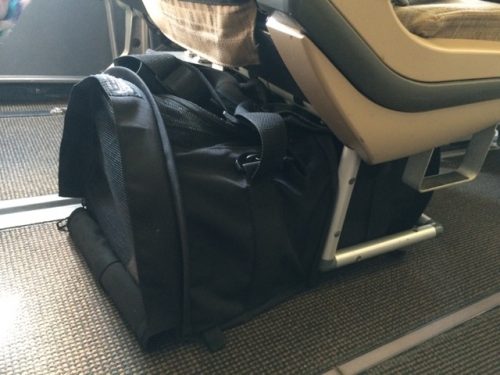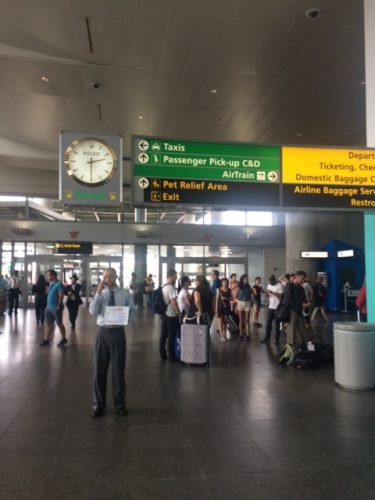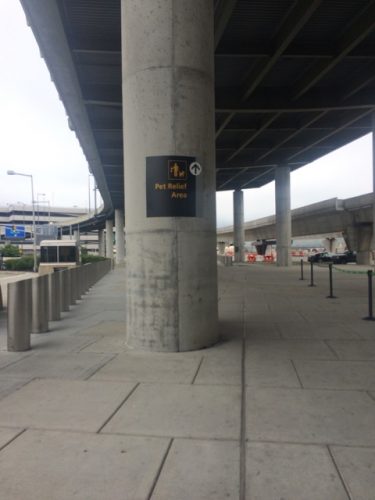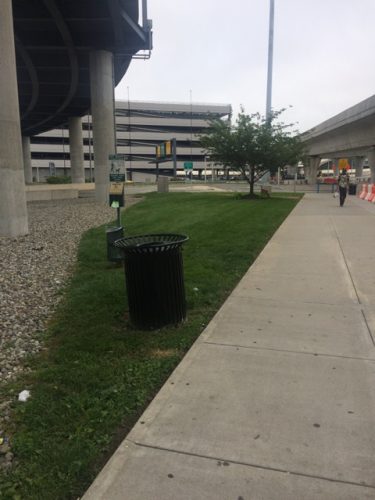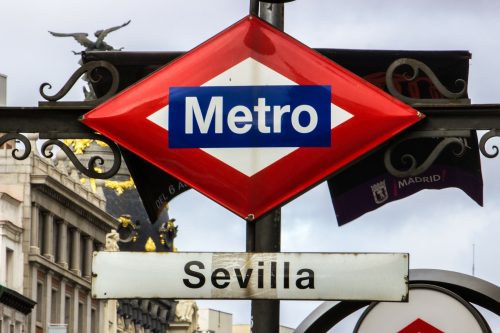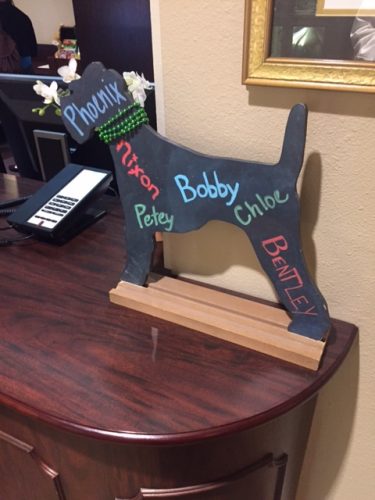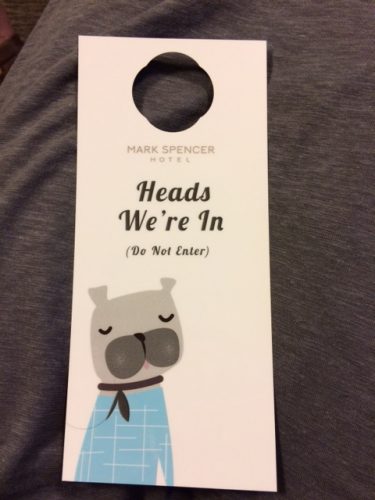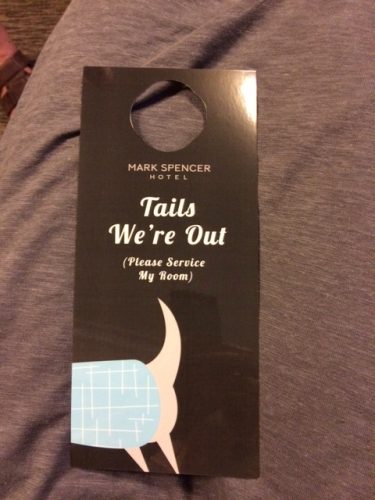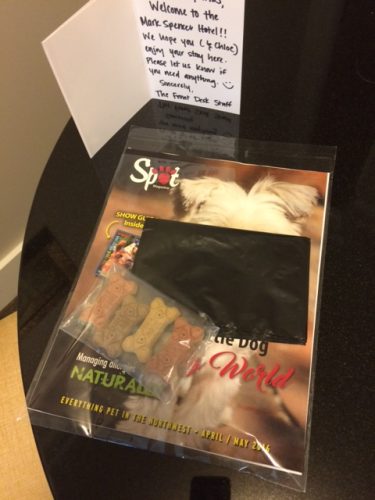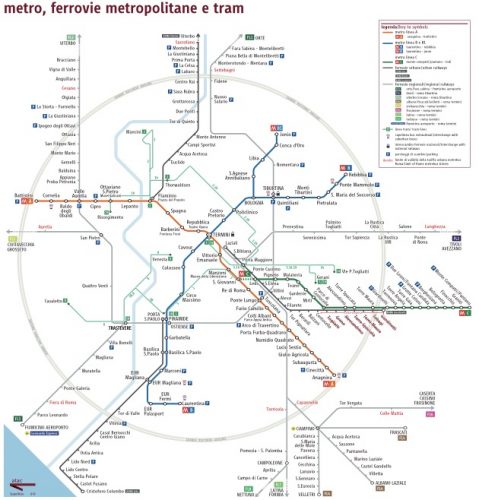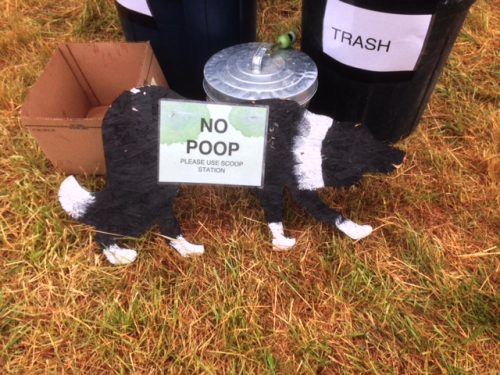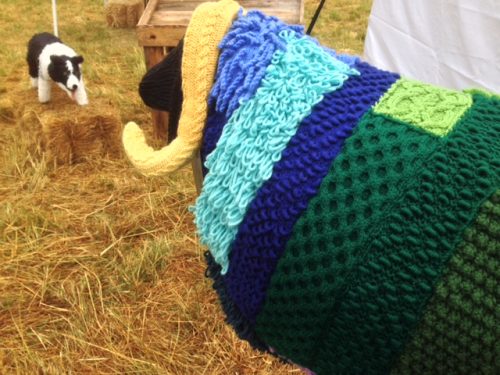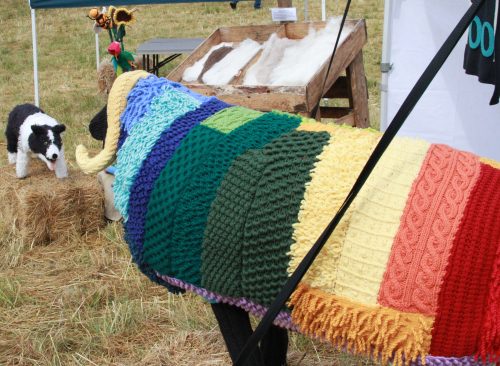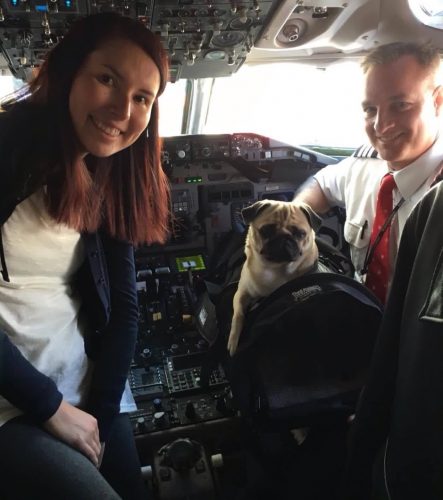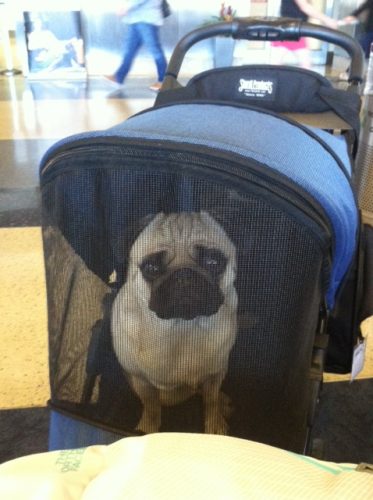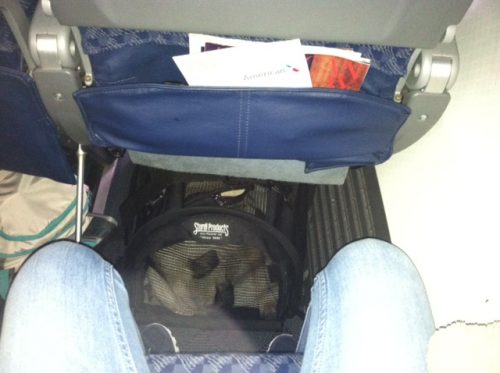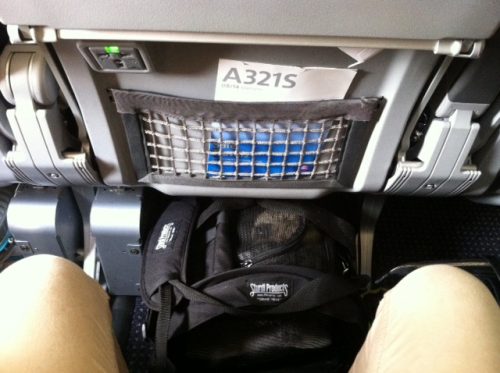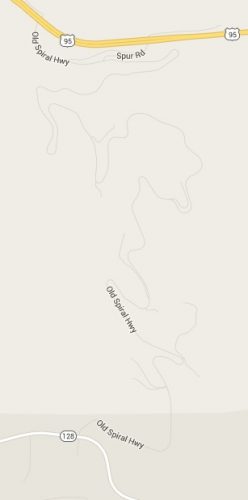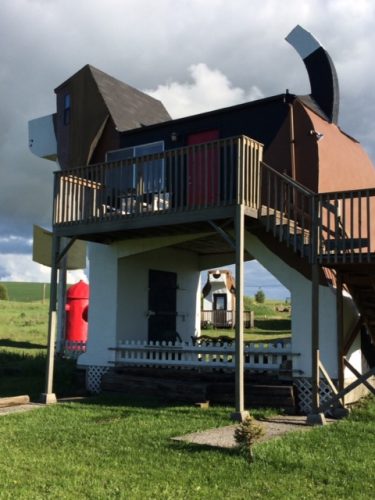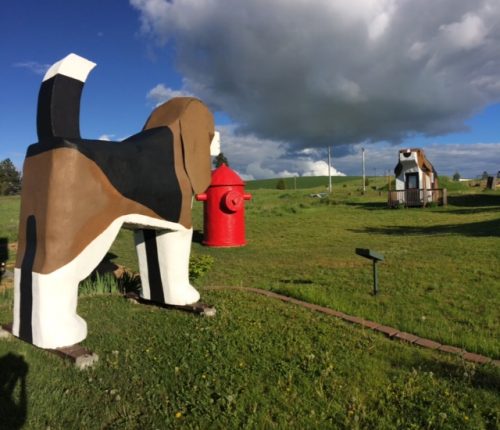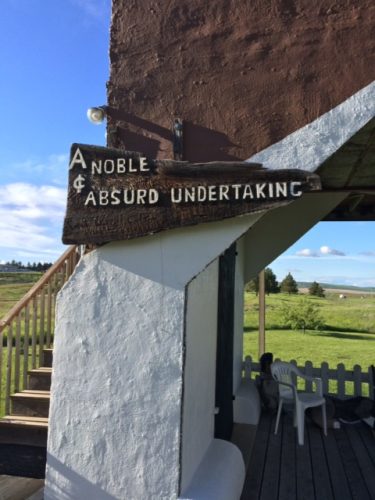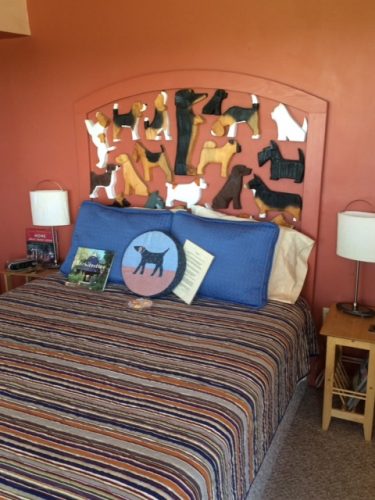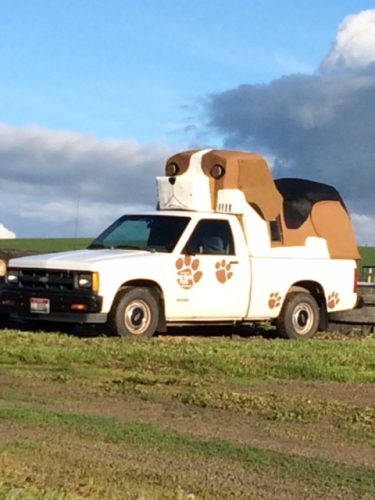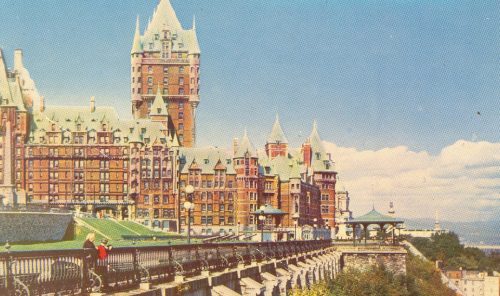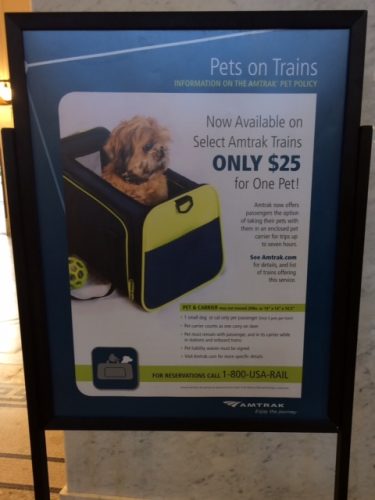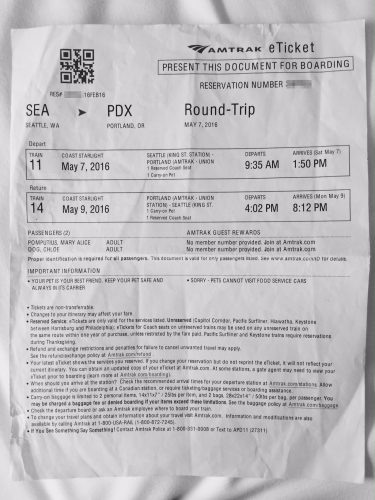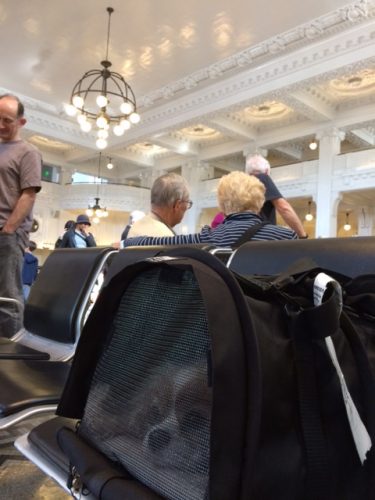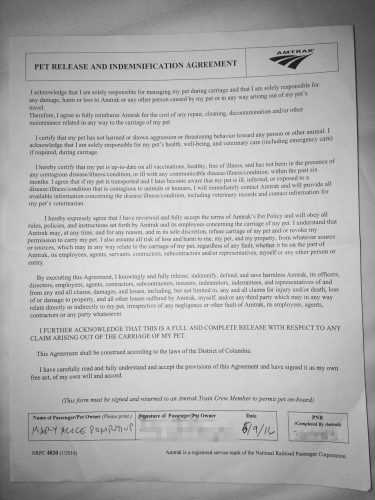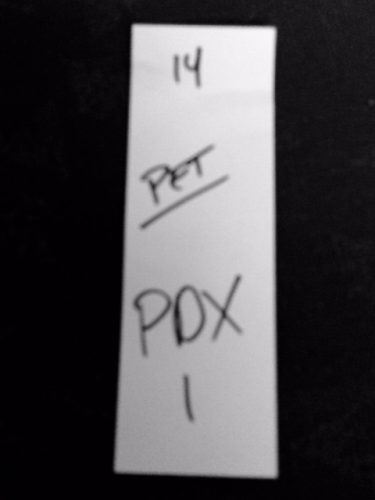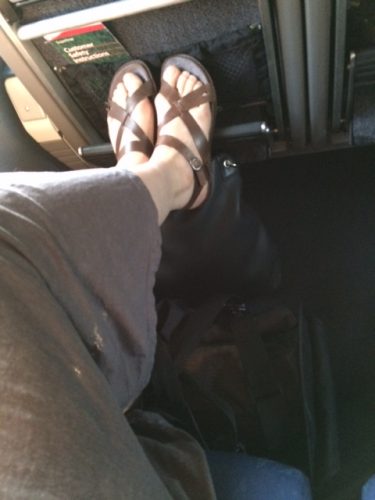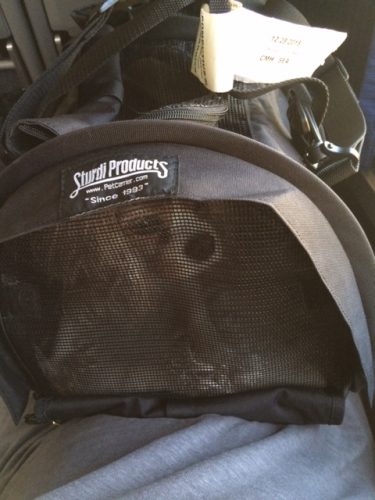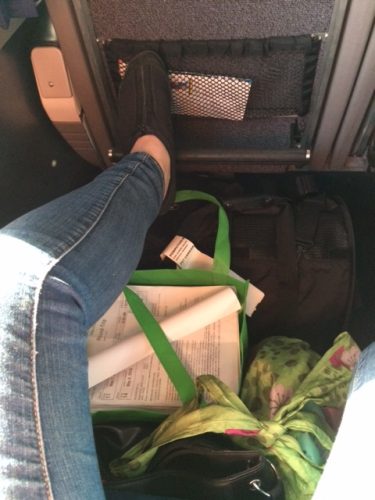Traveling by public transit in Copenhagen with a pet dog
Copenhagen kindly provides an official tourist site for the city, called VisitCopenhagen — so valuable for those of us who struggle with Danish. Its section on public transport sketches out the options: A-buses, colored red & yellow, operate around the clock, and are supplemented during part of the day by the blue & yellow S-buses (which have fewer stops); the metro currently has two lines (a third is being constructed), and is, among other things, a splendid way to reach the city from the airport; S-trains provide metro-ish rapid transit to areas outside central Copenhagen; and regional trains complete the picture. A useful resource is the online itinerary planner Rejseplanen.
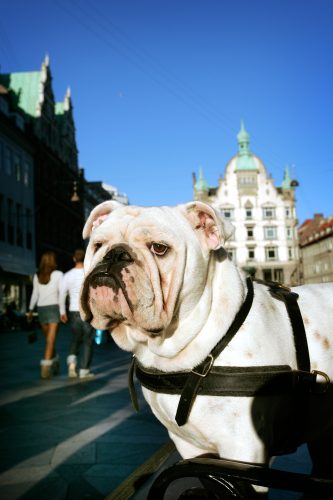
This Bulldog strolling on the Strøget, Copenhagen’s magnificent pedestrian zone, is a good reminder that this is a fantastic walking city. (Photo by Christian Alsing, via www.copenhagenmediacenter.com)
According to VisitCopenhagen, “You can bring one small dog or other type of pet on buses, trains and metro for free as long as you have a carrier or bag for it. The size of the bag must not exceed 100 x 60 x 30 cm, and it must not occupy a seat for another passenger. Thus place it on your lap or by your feet. Large dogs that do not fit in a carrier or bag, needs a child ticket and need to be on the floor at all times.”
That’s pretty definitive-sounding, but just to cover all the bases, I fired up Google Translate and grappled with the web sites for the various transit options. I made the effort to dig into the Danish-language sites because, in my experience, the English-language versions of foreign transit sites don’t include all the details (nor do tourist sites like VisitCopenhagen, useful though they are). Once you’re in Copenhagen, you’ll learn that Danes typically speak superb English, and you’ll have no trouble working out the finer points of traveling with your pet.
Here’s what I’ve learned:
Buses, apparently operated by Movia, but the only site I could find with practical bus info is the more general DOT site (pet policy here): Pet dogs are not allowed on A-buses, “except A-buses in Køge, Roskilde, Næstved, Holbaek and Elsinore;” there are certain times (presumably the hours when the buses are most crowded) that large dogs may not travel by bus; and the front half of a bus is designated pet-free for allergy sufferers. These details add so much nuance to the VisitCopenhagen summary I quoted above that I, for one, would want to have an extended chat with a bus system representative, once I was in town, to sort out the rules.
Metro, main page here (pet policy here and, in more detail, here): Only one pet per person; small pets in carriers travel for free; larger dogs must have a ticket (the cost of a child’s fare) and must be leashed. In a bit of Danish that Google Translate couldn’t quite handle, there’s an indication that larger dogs need to be kept away from certain seats reserved for folks with allergies (“og må ikke opholde sig ved de 6 forreste og bagerste sæder i toget, da disse sæder er forbeholdt allergikere”), so be sure to inquire about that.
S-trains and regional trains, operated by DSB (pet policy here): Small pets in carriers (maximum size 100 x 60 x 30 cm) travel for free, but must not occupy a seat; larger dogs must have a ticket (the cost of a child’s fare) and are presumably required to be on a leash; again, there are areas in the trains that are reserved for allergy sufferers, so inquire about that before boarding. (This pet policy language, by the way, suggests that the pet-free cars on metro trains are the first and last cars. It also reinforces my belief that the pet-free zones on these trains and on the metro, and perhaps also on buses, do not apply to pets contained in carriers, but again, I’d double-check that before boarding.)
Other interesting options
As I bounced around looking for public transport links, I also came across these sightseeing options:
Copenhagen’s harbor buses (Havnebussen) — These blue & yellow boats are part of the transit system, but are so appealing that they’re a tourist draw as well as an aid to commuters. There are three numbered lines, but 991 and 992 cover the same territory, with the same stops (Route 991 heads north from Teglholmen, and 992 heads south from Refshaleøen). The third line, 993, connects Nyhavn, Experimentarium City, and the Opera. I simply could not find a good link for the havnebussen: Movia is apparently its operator, but neither its site nor the DOT site were the smallest help. I did manage to find a timetable for sailings [PDF], and Google Maps shows where the havnebus stops are located. My guess is that the pet policy is similar to that of the rest of the public transit system.
Canal and harbor cruises, offered by Strömma — Well-behaved and leashed dogs are allowed on board, except on the Trekroner Fort cruise (“Ja, hvis den er i snor og kan styres. Hunde er ikke tilladt på Trekroner.”) These cruises will cost more than the harbor buses, but you’ll be provided with information about what you’re seeing, and the boats are designed to provide comfortable seating and good visibility.
Hop-on, hop-off buses run by Strömma — Again, leashed dogs are allowed on board, but must travel with their people on the top, open deck (“Ja, men hunden skal være i snor og skal kontrolleres. Alle hunde skal opholde sig på øverste dæk af bussen med deres ejer.”)
For details about pet policies for other cities’ public transit systems, please check out Dog Jaunt’s handy collection of blog posts about pet friendly public transit!
